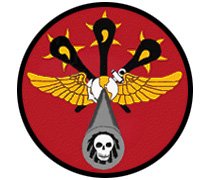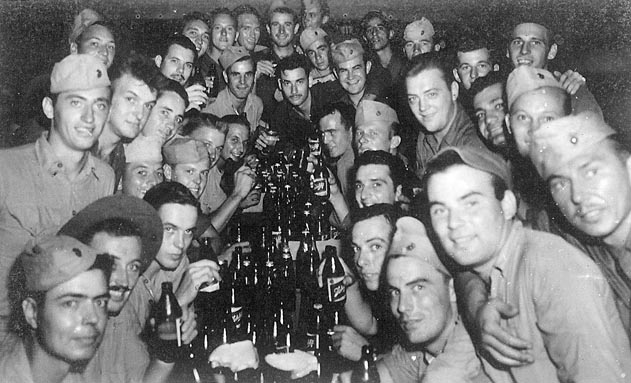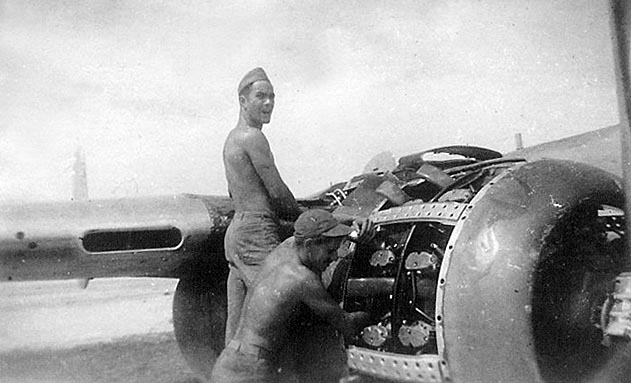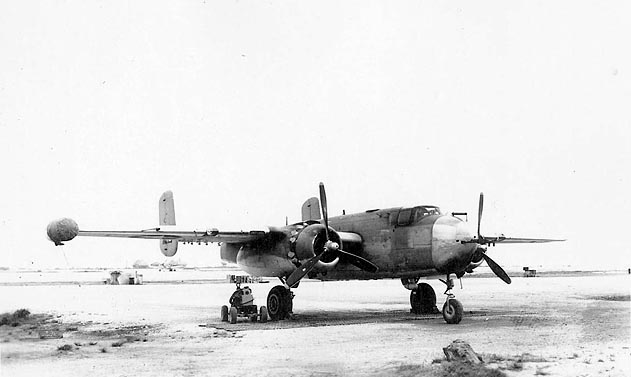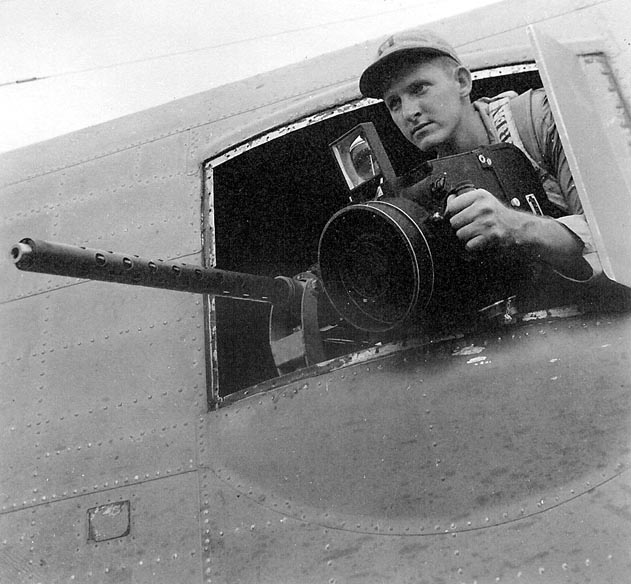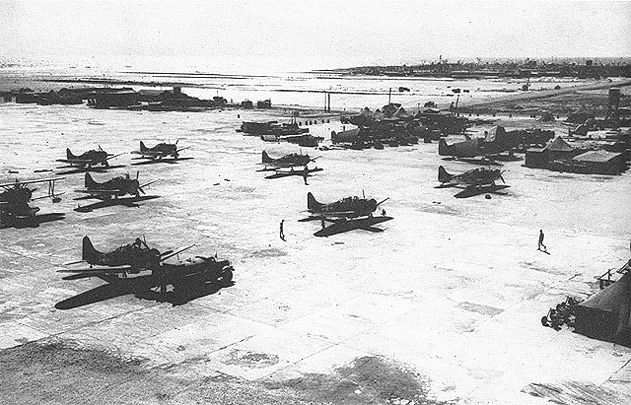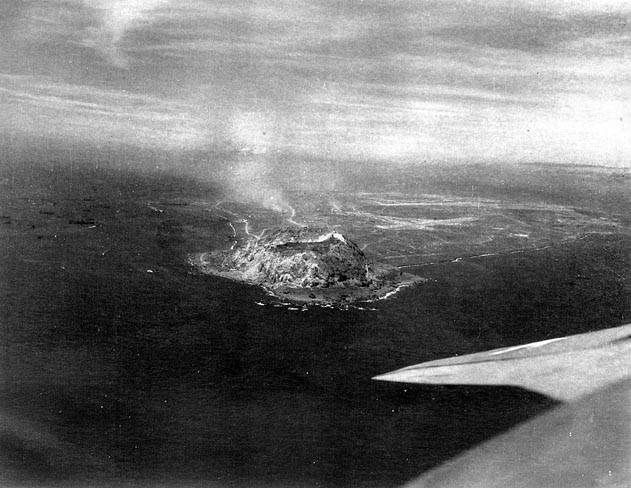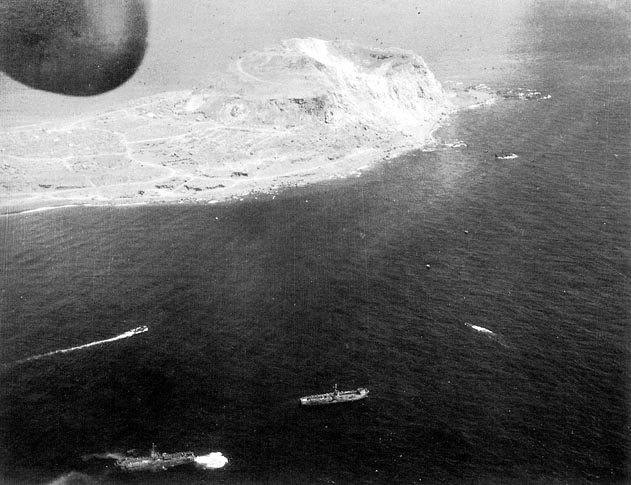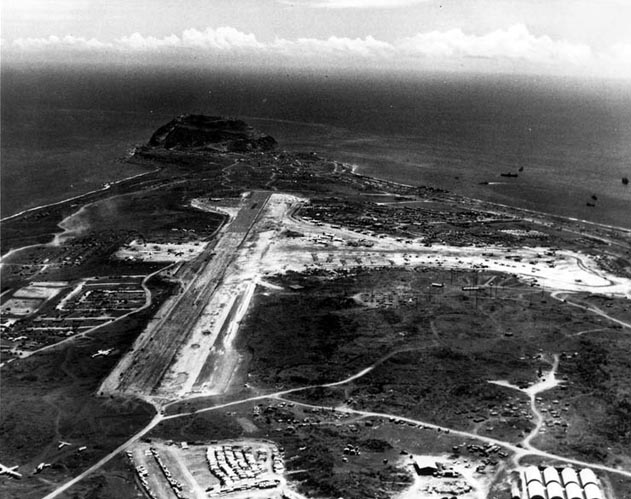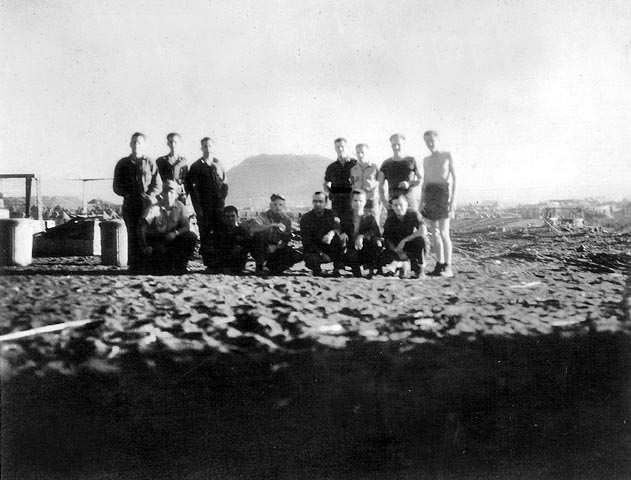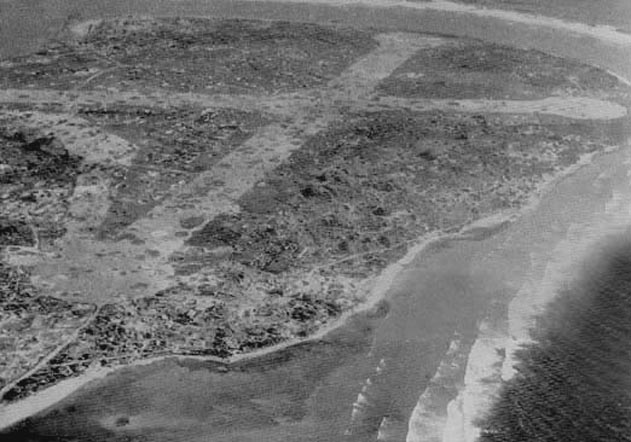|
|
||
|
|
||
|
|
MAY 1945 A daily summary of squadron activities for the month is provided below. Additional details for significant events may be found at the linked text. May 1, 1945: Four planes conducted hunter-killer flights, negative. Two planes flew assigned shipping lane patrol missions. One plane performed a special administrative flight. May 2, 1945: Two planes flew assigned shipping lane patrols. One plane conducted a search flight to Kusaie. One plane flew a friendly atoll search in the northeast sector which was aborted due to poor weather. May 3, 1945: One plane searched northeast friendly atolls. Two planes conducted shipping lane patrols. One plane performed a local flight to check 8280 frequency with negative results. May 4, 1945: One plane flew a search flight over Kusaie. Two planes patrolled assigned shipping lane. Two planes performed flights to Roi and returned to Kwajalein. May 5, 1945: Two planes flew shipping lane patrol missions. One plane searched northwest friendly atolls. May 6, 1945: Two planes flew assigned shipping lane patrols. One plane conducted a search flight to Kusaie which was aborted due to poor weather. One plane flew a photo flight over Mejit Island. One plane flew an administrative flight to Engebi Island, Eniwetok Atoll. May 7, 1945: Two planes patrolled assigned shipping lanes. One plane conducted a search flight over Kusaie. One plane flew to Roi and returned to Kwajalein. One plane returned from an administrative flight to Eniwetok the previous day. May 8, 1945: Two planes patrolled assigned shipping lanes. Two planes flew to Roi. One plane conducted a hunter-killer flight with negative results. One plane dispatched to investigate dye-marker, negative results. May 9, 1945: Two planes flew to Roi. One plane conducted a search flight over Kusaie. One plane flew a special administrative flight over Wotje Atoll. One plane dispatched to investigate flares near Wotje Atoll, negative. Two planes patrolled assigned shipping lanes. One aircraft and crew arrived on Kwajalein to serve as replacements for the aircraft and crew lost over Ponape Island on February 6, 1945. May 10, 1945: Two planes patrolled assigned shipping lanes. One plane searched northeast friendly atolls. Two planes flew to Roi. May 11, 1945: Two planes patrolled assigned shipping lanes. One plane conducted a search flight to Kusaie. May 12, 1945: One plane flew a friendly atoll search mission in the south sector. One plane assigned to search the friendly atolls in the northwest sector, however the mission was aborted due to poor weather. Two planes patrolled assigned shipping lanes. May 13, 1945: One plane conducted a search of friendly atolls in the northwest sector. Two planes patrolled assigned shipping lanes. One plane flew a special escort mission from Majuro over Jaluit. Four planes and eight crews on detached duty, reference: Secret dispatch from CinPac and CinCPOA Advanced Headquarters to COMMARGILS AREA, dated 100734Z, "Requesting transfer of four planes and eight crews to report to Commanding Officer, Marine Bombing Squadron Six-Twelve, Saipan for temporary duty." Secret dispatch from COMMAGILS Area to COMMARAIRWING FOUR dated 102038Z, "Complying with request." Squadron Operations Order 3-1945 assigned the personnel to carry out the duty performed at the forward area. May 14, 1945: Two planes flew assigned shipping lane patrols. One plane aborted a search flight to Kusaie due to poor weather. May 15, 1945: Two planes patrolled assigned shipping lanes. One plane conducted a search flight to Kusaie. May 16, 1945: Two planes flew assigned shipping lane patrols. One plane flew to Roi. One plane conducted a special flight to identify a liberty ship. May 17, 1945: Two planes flew assigned shipping lane patrols. One plane conducted a search flight to Kusaie. One plane flew a search mission of friendly atolls in the northwest sector. May 18, 1945: Two planes patrolled assigned shipping lanes. One plane flew to Roi. One plane flew a search mission of friendly atolls in the northeast sector. Two planes flew to Majuro for duty. May 19, 1945: Two planes dispatched to destroy the remains of an SB2C in Wotje Lagoon. Two planes patrolled assigned shipping lanes. One plane flew to Roi. One plane flew a hunter-killer flight to Wotje and Maloelap Atolls. Two planes arrived on Iwo Jima for temporary duty with VMB-612. May 20, 1945: Two planes patrolled assigned shipping lanes. One plane conducted a snooper flight over Kusaie. One plane flew a search mission of friendly atolls in the southern sector. Two planes on Iwo Jima flew a patrol in search of shipping to Haha Jima (Aircraft Action Report 1-Iwo). May 21, 1945: Two planes patrolled assigned shipping lanes. One plane flew a search mission over Kusaie. Two planes based on Iwo Jima conducted anti-shipping patrols to Haha Jima (Aircraft Action Report 2-Iwo). Two planes flew snooper flights over Mille, Wotje, Maloelap, and Jaluit. Two additional planes assigned to temporary duty with VMB-612 arrived on Iwo Jima. May 22, 1945: Two planes flew assigned shipping lane patrols. Three planes conducted snooper flights over Mille, Wotje, Maloelap, and Jaluit. One plane based on Iwo Jima conducted a daylight anti-shipping patrol to Chichi Jima (Aircraft Action Report 3-Iwo). May 23, 1945: Two planes flew assigned shipping lane patrols. Two planes conducted snooper flights over Mille, Wotje, Maloelap, and Jaluit. One plane flew a search mission over Kusaie. Two planes returned to Kwajalein from Majoro. Two planes flew hunter-killer flights, negative. Two planes based on Iwo Jima conducted an anti-shipping patrol to Chichi Jima (Aircraft Action Report 4-Iwo). May 24, 1945: Two planes flew assigned shipping lane patrols. One plane flew a search mission of friendly atolls in the southern sector. Two planes based on Iwo Jima conducted an anti-shipping patrol to Chichi Jima (Aircraft Action Report 5-Iwo). May 25, 1945: Two planes flew assigned shipping lane patrols. One plane flew a search mission over Kusaie. Two planes based on Iwo Jima conducted an anti-shipping search to Hachijo Jima (Aircraft Action Report 6-Iwo). May 26, 1945: Two planes flew assigned shipping lane patrols. One plane dispatched to investigate 8280 frequency, negative. One plane flew a search mission of friendly atolls in the northeast sector. Two planes based on Iwo Jima conducted an anti-shipping search to Hachijo Jima (Aircraft Action Report 7-Iwo). May 27, 1945: Two planes patrolled assigned shipping lanes. One plane dispatched to investigate a light, negative. One plane conducted a search flight over Kusaie. Two planes flew to Majuro for duty. Two planes based on Majuro flew hunter-killer missions, negative. May 28, 1945: Two planes flew assigned shipping lane patrols. One plane flew a search flight of friendly atolls in the northwest sector. One plane flew a reconnaissance flight of Japanese atolls and a strike on Taroa Island (Aircraft Action Report 35). Four planes departed Iwo Jima for Kwajalein pursuant to verbal orders upon completion of temporarily duty with VMB-612. May 29, 1945: One plane flew assigned shipping lanes patrol. One plane flew a reconnaissance flight of Japanese atolls and a strike on Maloelap Atoll (Aircraft Action Report 36). Two planes temporarily based at Majuro return to Kwajalein. Two planes flew to Majuro for duty. May 30, 1945: Two planes flew assigned shipping lanes patrol. One plane flew a reconnaissance flight of Japanese atolls and a strike on Taroa Island, Maloelap Atoll (Aircraft Action Report 37). Two planes returned from forward area on Iwo Jima following completion of detached duty with VMB-612. May 31, 1945: Two planes patrolled assigned shipping lanes. One plane conducted a snooper flight over Kusaie. Two planes conducted a reconnaissance of enemy atolls and a strike on Taroa Island, Maloelap Atoll (Aircraft Action Report 38). Remaining two planes returned from forward area on Iwo Jima following completion of detached duty with VMB-612.
V-E DAY CELEBRATION: On May 9, 1945 a group of squadron members celebrated V-E Day in the Beergarden on Kwajalein. Although VE-Day was May 8, 1945 in the United States and Europe, on Kwajalein it was one day later due to the difference in time zones. Photograph: Marine Bombing Squadron Six-Thirteen (Courtesy of Herbert E. Schwartz)
ENGINE MAINTENANCE: Two unidentified Marines of VMB-613 perform engine maintenance work on the starboard engine of a PBJ-1H on Kwajalein. Note the unpainted leading edge of the wing, indicating that this photograph was taken late in the war. Through the efforts of the Engineering Department, no VMB-613 aircraft was lost overseas due to mechanical malfunctions. Photograph: Marine Bombing Squadron Six-Thirteen (Courtesy of Charles F. Knapp)
PBJ-1H ON KWAJALEIN: A VMB-613 PBJ sits in the flight line on Kwajalein in May of 1945. Note the bare metal on the nose of the aircraft and the repainted areas on the front of the fuselage. Photograph: U.S. Marine Corps (Courtesy of Frank E. Acker)
AERIAL PHOTOGRAPHER: Corporal Edmund E. Zitkus, demonstrates his technique for taking aerial photographs in the starboard waist-gun window of a PBJ. Note the spoiler that was added to the front of the window opening by VMB-613's Engineering Department once the Plexiglas had been removed. Photograph: U.S. Marine Corps (Courtesy of Frank E. Acker)
ROI FLIGHT LINE: Sitting on the aircraft dispersal area on Roi a J2F, seven SBDs, and two TBMs can be seen with Namur Island in the background. VMB-613 frequently flew to Roi on administrative flights, and provided navigational escorts for dive bombers and fighter-bombers based on the island. Photograph: U.S. Marine Corps
MOUNT SURIBACHI: Departing Iwo Jima for the waters off the the Bonnin Islands to search for shipping targets, a VMB-613 aircraft circles Mount Suribachi. To the right and slightly above Mount Suribachi is the south airstrip. Photograph: Marine Bombing Squadron Six-Thirteen (Courtesy of William A. Kehr)
IWO JIMA: Following take-off, a PBJ-1H of VMB-613 circles Iwo Jima to form-up in preparation for an anti-shipping mission in the waters surrounding Chichi Jima, Haha Jima, and Hachijo Jima, approximately 160 miles to the north. Mount Suribachi can be see in the upper center of the photograph, while an escort carrier is in visible in the lower center. Photograph: Marine Bombing Squadron Six-Thirteen (Courtesy of William A. Kehr)
IWO JIMA AIRSTRIP: This aerial view was taken on May 26, 1945 looking over Iwo Jima's South Airfield (formerly Motoyama #1) with Mount Suribachi in the distance. It was from this airstrip which VMB-612 and VMB-613 conducted patrol and anti-shipping missions. Photograph: U.S. Marine Corps
IN THE SHADOW OF SURIBACHI: An unidentified group of Marines from VMB-613 pose for a group photograph in the shadow of Mount Suribachi on Iwo Jima. The photograph was taken in May of 1945 while an advance detachment of the squadron was performing anti-shipping patrols from the island with VMB-612. Photograph: Marine Bombing Squadron Six-Thirteen (Courtesy of William A. Kehr)
TAROA ISLAND: The effects of continual bombing are clearly visible in this photograph of the Japanese airstrip at Taroa Island, Maloelap Atoll. Despite the intense bombing, the U.S. Strategic Bombing Survey found that three command and fire control facilities, as well as 40 anti-aircraft guns remained operational at the end of the war. As usual, although lacking in food, the Japanese garrison had ample supplies of ammunition remaining. Photograph: Marine Bombing Squadron Six-Thirteen (Courtesy of William A. Kehr) |
|
|
Copyright © 2008 Marine Bombing Squadron Six-Thirteen Association. All Rights Reserved. |
||
